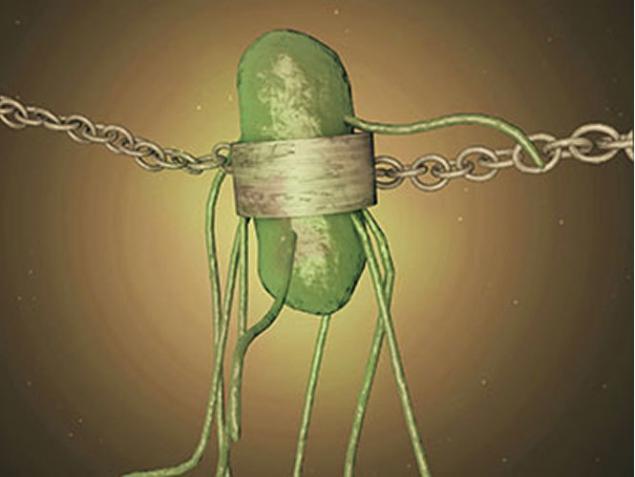Bacteria linked global genetic network
 Bashny.Net
Bashny.Net

Similar to how people share information through electronic means, bacteria also exchange useful genes. It is not about the hereditary ("vertical") transmission of information: bacteria, like people, pass it on can separate unrelated individuals. This phenomenon is called horizontal gene transfer; it is considered, is not only the bacteria, but that they reached a truly unprecedented scale.
In an article published in the journal Nature, scientists from the Massachusetts Institute of technology (USA) reported that they were able to identify 10 of thousands of genes, wandering between 2 235 genomes. This figure is rather puzzled researchers about gene transfer more or less known, but no one thought he acquired from bacteria such a scale. It really can be compared with a worldwide network, in which constantly circulates the important genetic information. Genes exchanged quite distant from each other groups of bacteria: some of them, according to the researchers, different from each other as yeast fungus from man. This suggests that gene transfer was realized really recently: from genes falling in different groups of bacteria, there was no time to mutate, that is, to acquire distinction.

A diagram showing the possible ways the exchange of genes between bacteria: using viruses, extrachromosomal plasmid DNA or simply using DNA from dead cells (figure Bryson Biomedical Illustrations).It is due to global genetic networks of bacteria have an amazing ability super-fast to acquire resistance to antibiotics. The researchers found that bacteria somehow relevant to humans, 60% of the information exchanged falls on genes for resistance to certain antibiotics. It's not just about the microorganisms that tend to the man himself, but also for those that accompany livestock and General agriculture. There were 42 cases of gene transfer between human and bovine bacteria, and almost a billion years of evolution that separates these two groups is not an obstacle to such information exchange.
In addition, 43 cases were observed gene transfer between bacteria of people of different nationalities: obviously, the bacteria have been living in "global world". The decisive factor for successful exchange of genetic information is considered to be the similarity of ecological niches: if two different bacteria live in the middle of the gut, they are happy to share their genes, even if in one case the human intestine and the other cow. In addition, the exchange of genes occurs easily between species, with approximately equal pathogenicity or needs oxygen. All this forms approximately the same environmental conditions — and thus their inhabitants have something to say to each other. Where people live-home, in Russia or Australia, it does not matter.
If the gene proved to be useful in the household, that is, and really gave it to the new owner resistance to any antibiotic is this type of bacteria and is transmitted from generation to generation. Given all this, you can imagine how coordinated should be measures taken to prevent epidemics and generally against the spread of pathogens. In the future, scientists intend to obtain more detailed information about the work of the world genetic networks of bacteria. For example, can share information bacteria living in different parts of the human body or causing various diseases.published
Source: compulenta.computerra.ru/chelovek/biologiya/643096/
Tags
See also
10 most bizarre types of massage
Mythology Facebook
Everything you need to know about bacteria
Study: migraines may cause intestinal bacteria
Sneezing in the light and another five fun genetic traits
The Paris startup Gloweе: bacteria as an alternative to light bulbs
Programming the universe: from the sexual revolution to the quantum computer
Who are trilobites and how to look for them (24 photos)
DEAD DOCTORS DO NOT LIE
















